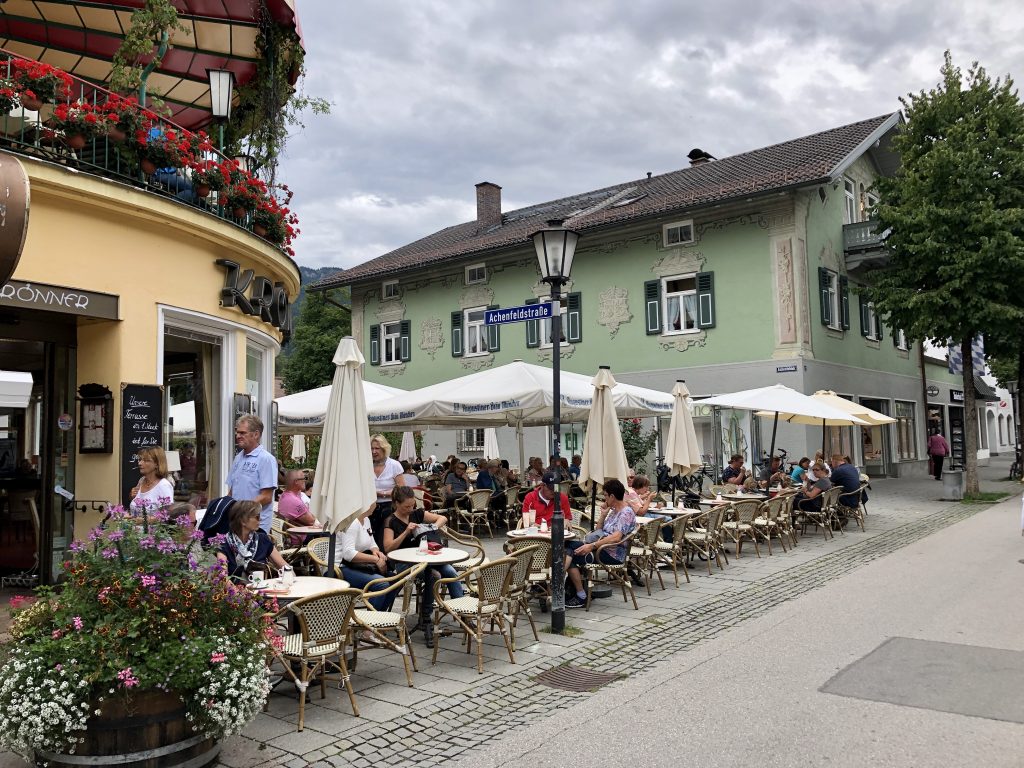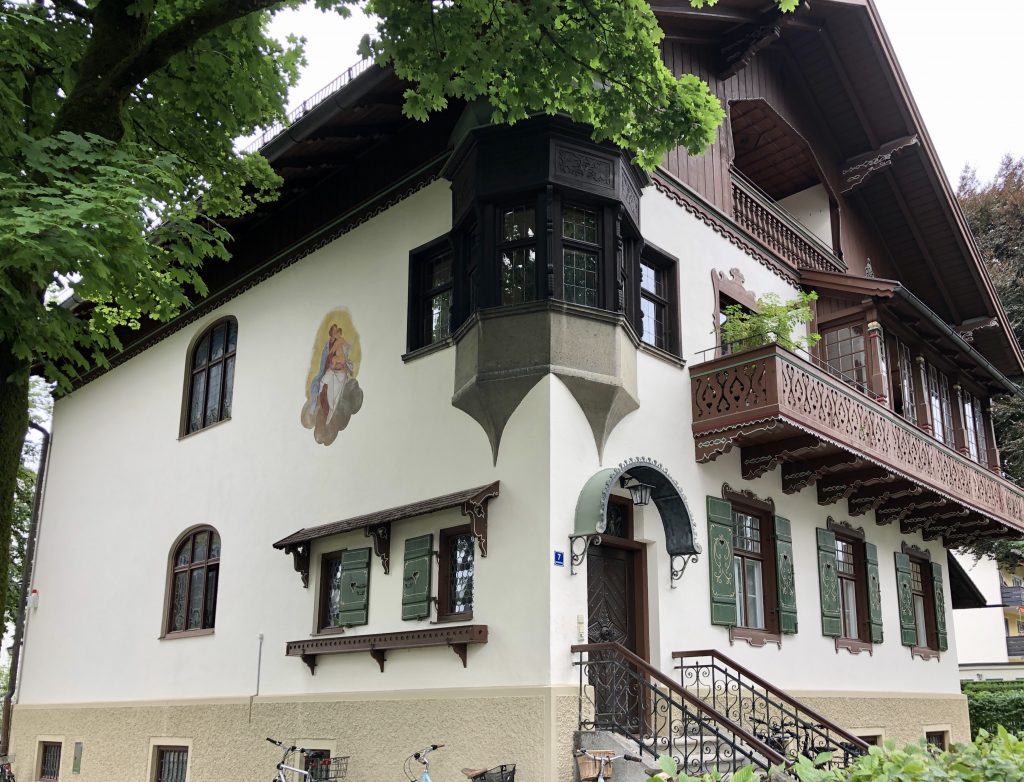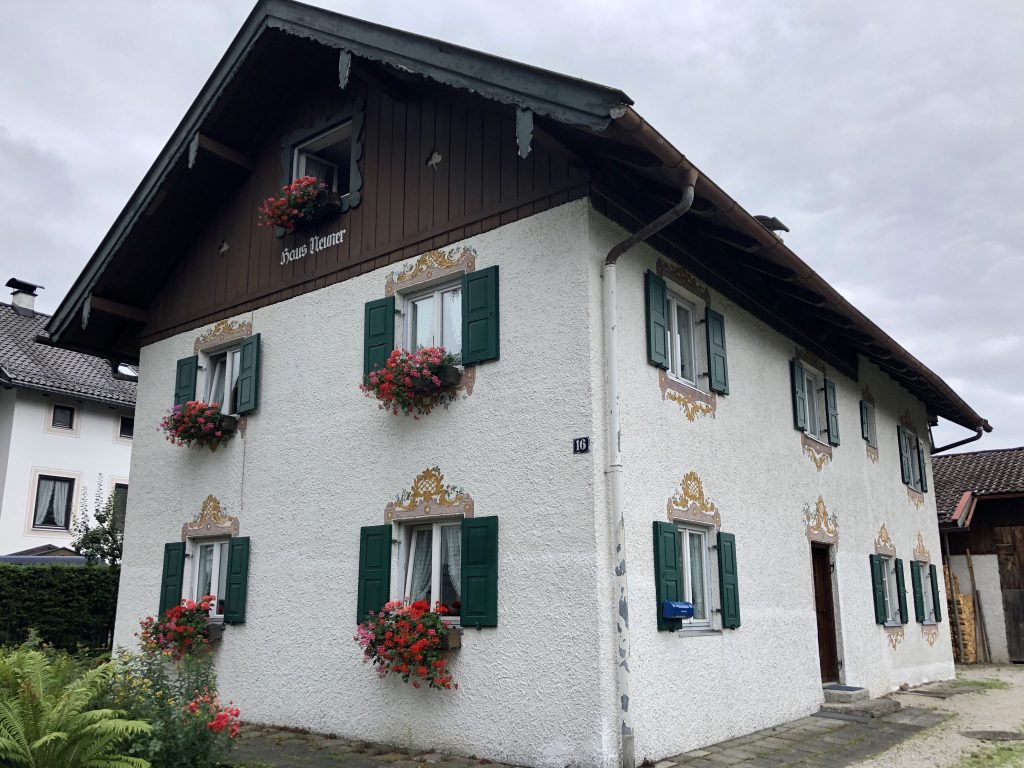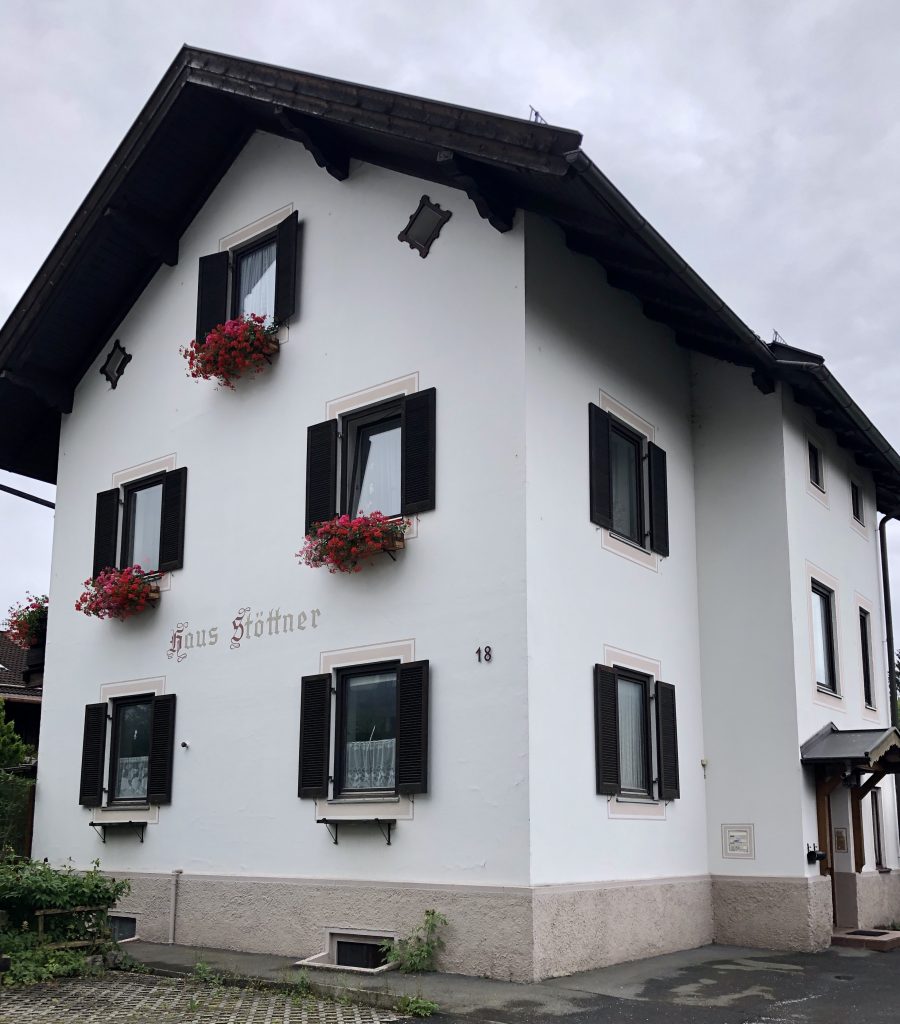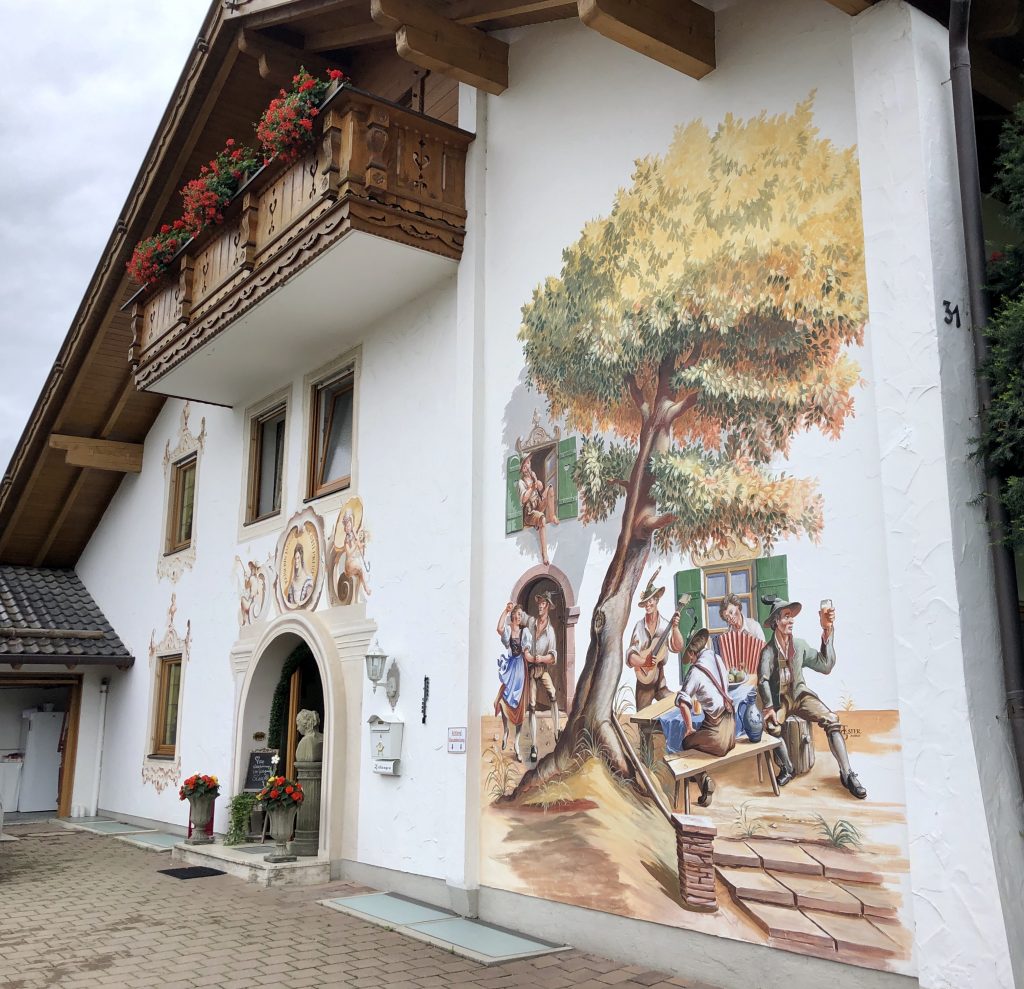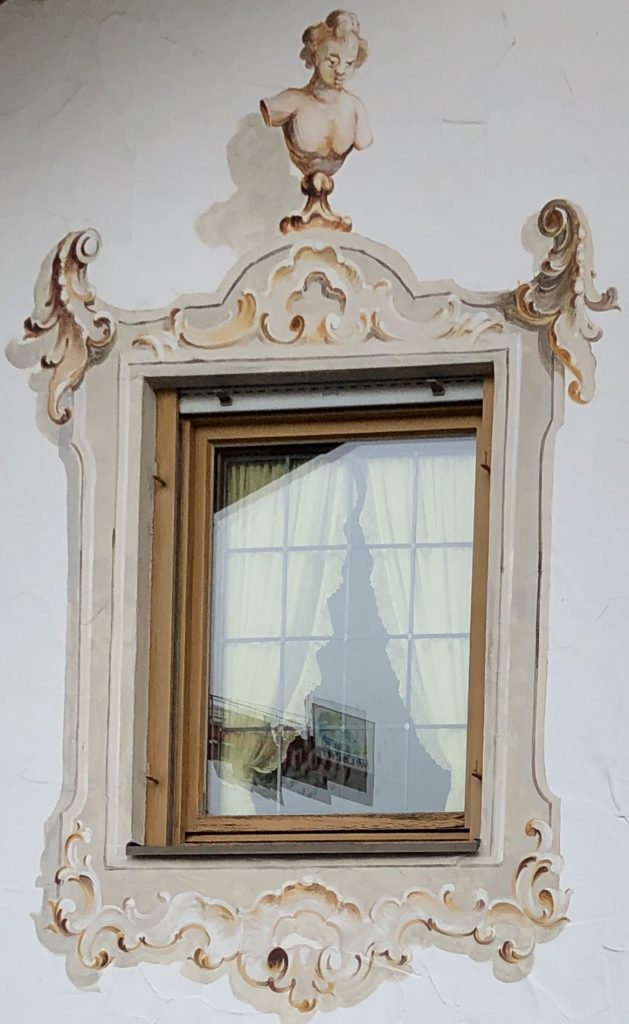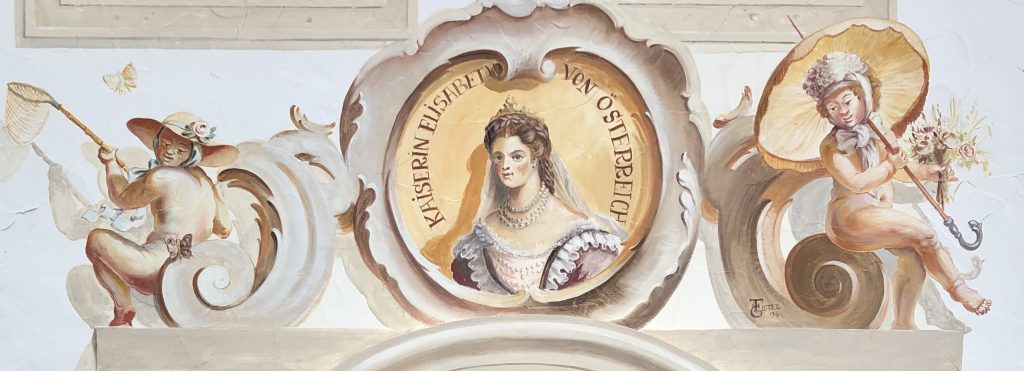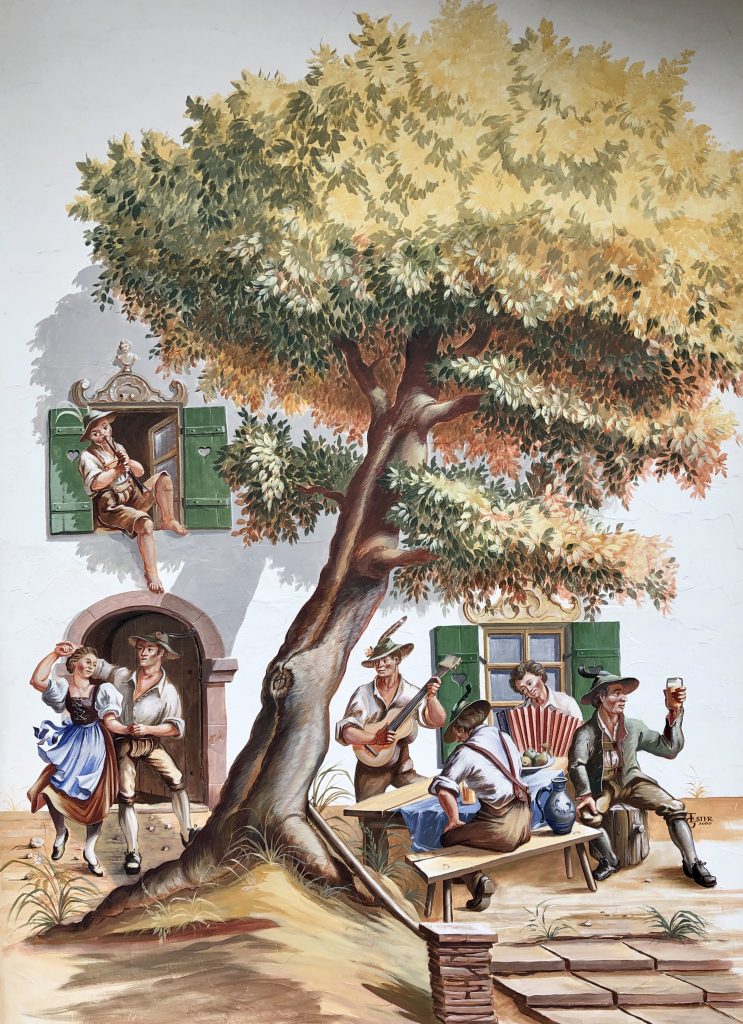- Bayerisches Landesamt für Denkmalpflege. Denkmalliste, Markt Garmisch-Partenkirchen. 4 August 2020, www.geodaten.bayern.de/denkmal_static_data/externe_denkmalliste/pdf/denkmalliste_merge_180117.pdf, p. 5: "D-1-80-117-295 Achenfeldstraße 7. Ehem. Wohn- und Bürogebäude, zweigeschossiger asymmetrisch gegliederter Flachsatteldachbau im alpenländischen Heimatstil mit Eckerker, Balkon und Giebellaube, von Johann Ostler, 1905".
Lüftlmalerei
A street by street guide to the fresco and facade paintings in the Garmisch-Partenkirchen district

